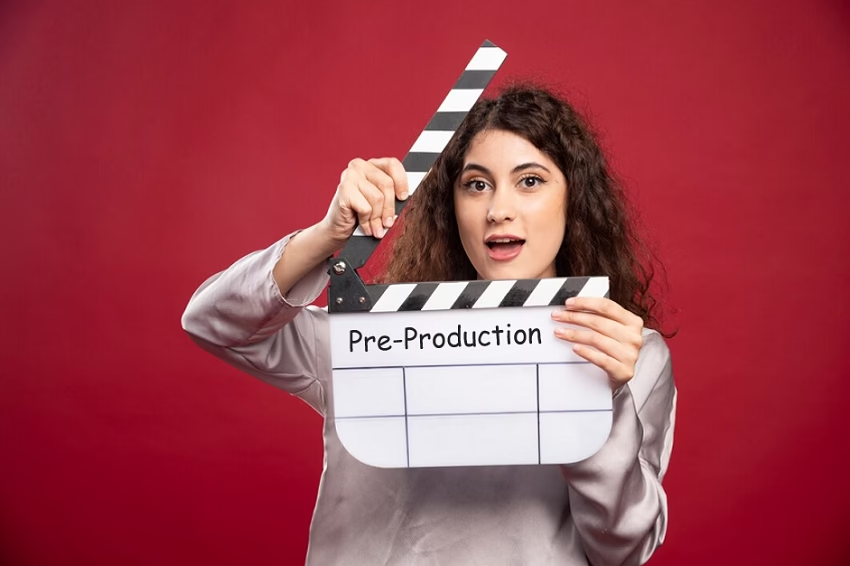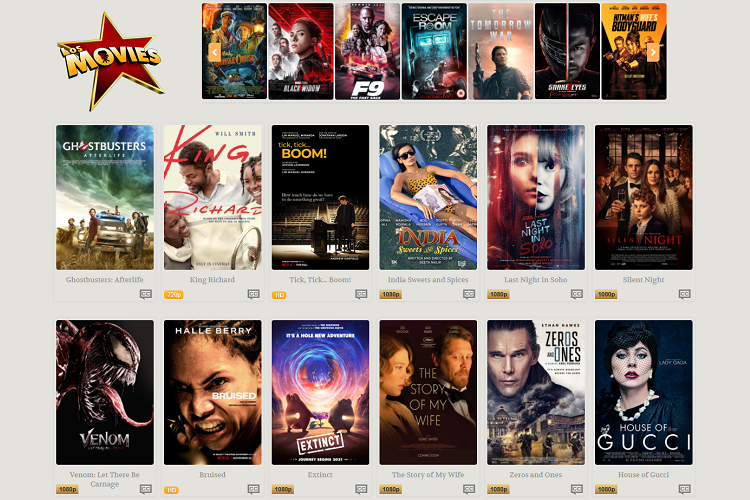Pre-production in film is always regarded as the preparation stage in which all basics of the film are planned. It is a phase that requires a lot of planning and coordination for the next phases of production and post-production to run successively without a hitch. This is the stage in which ideas are developed into tangible plans, funds for a project are secured and time table prepared.

The purpose of this article is to provide you with a step-by-step plan of how to go through the pre-production stage while stressing the relevance of each step towards the making of a successful film.
Guide to Film Pre-Production Like a Pro
Learn about the fundamental phases of pre-production in film and follow the key steps of scriptwriting, pre-production planning, and budgeting before a film roll is ready in the shooting phase.
1. Developing the Concept
The origin of every movie is thought of as a mere concept that spawns the motion picture. The first global stages of film and video production are during pre-production, and the first steps in converting this basic concept into this viable project are:
- Scriptwriting: It is the key component of filmmaking where every film is mainly constructed. For this reason, a good script should contain features such as the storyline, characters, dialogues, and action plans. Hence, screenwriters, directors, and producers can work together to polish the script so that it interesting and realistic to incorporate into the production set.
- Logline and Treatment: In the simplest sense, a logline conveys some elements of your plot in one or two lines. A treatment, however, is a written report that gives an extensive account of the movie plot and scenes.
- Marketing and Selling the Film: After the script has been developed, the next process is to look for producers or investors to fund the projects. It can also ensure the necessary funding that would enable one to continue with the business venture.
2. Assembling the Creative Team
The independence of the type of film is, it is a work of art which is made by several professionals in the field.
- Director: The director is an essential part of the crew, who directs the work on the film and interprets the concept and vision of the script in the artistic and dramatic vision of the film. First, the director to be hired must have a vision that complements the story that the script has to offer.
- Casting: Here, the actors that fit the character in the script should be hired. This may entail acting practice in front of a casting director or the producer, screen test, and bargaining with agents.
- Production Designer: This can also be referred to as the artistic director of the movie as he is in charge of visual appeal of the movie. Production designer is in coordination with the director to design the sets, select the places needed for shooting and in overall appearance.
- Writer: The writer creates characters for the film and develops the plot, alongside being an author of a script.
- Editor: I would like to note that the editor is involved mainly in post-production, while the involvement of the editor in the early stages implies a high level of timidity in the course of the film.
3. Creating a Detailed Production Plan
Thus, additional topics in this category would be Still, with the creative talents selected, the process turns to organization and coordination.
- Storyboarding: Storyboard involves creating pictures as a way of depicting scenes by scene sequences. Planning saves time and brings cohesiveness in thinking between the director and the cinematographer, who will both envision the shots and sequences.
- Schedule and Shooting Script: One of the ways of developing a detailed shooting schedule is to establish when shooting will happen for each scene. Shot lists and scene breakdowns make up the shooting script that defines the shooting process’s organization.
- Location Permissions: Exploration of grounds and permissions is extremely important and is often referred to as location pre-permission. This includes visiting the potential locations for filming, discussing the legalities of shooting at the location with the owners or representatives and checking whether the location can be used for shooting or not.
- Budgeting: This involves a summary of all costs likely to be incurred starting with equipment, crew, and everything that may be spent during post production among others. Budgeting is one of the most important elements for the financial performance of the film.
4. Building the Production Team
It is a group of individuals responsible for the operational management of the motion picture.
- Producer: The producer is responsible for all the pre-production aspects of film making and has financial, timeline and other planning responsibilities.
- Line Producer: The line producer oversees the production expenses, and time tables of shoot, thus being in charge of the general coordination of the shoot.
- Production Manager: This position entails an oversight of production aspects such as transportation and food services among others.
- Assistant Directors (ADs): They are necessary to keep order during a scene shooting as well as responsible for the shooting day plan and communication of all the departments.
- Casting Director: This professional is in charge of the auditions and collaborates with the director as well as producers to choose the actors for the project.
5. Design and Procure Equipment
Pre-production requires one to make some decisions concerning selection and purchase of the required equipment.
- Camera and Lighting Equipment: Depending on the vision of the DP, proper cameras and lights are picked from the set to meet his/her vision.
- Sound Equipment: while shooting the film, accurate sound reproducing equipment must be used in order to record all vital dialogues and sounds.
- Props and Wardrobe: They prepare and acquire accessories and costumes that complement and support the style in the movie from the production designer as well as the costume designer.
6. Pre-Visualization and Rehearsals
Pre-visualization means pre-visualization in particular of scenes, which often contain visual effects, and it is done with the help of technical means.
- Live-action Integration: In case, the film includes VFX then pre-vis assists in planning as to how they will interconnect with the live-action shoot.
- Rehearsals: These are arrangements that enable the actors to be well conversant with their roles while the director is able to work on the movements of the actors on stage.
7. Legal and Insurance Considerations
Involving legal and insurance affairs are often considered as an essential pre-production process. However, such matters are sometimes underrated.
- Contracts and Releases: Contracts for the cast and crew, agreements with talents, and location release must be obtained to ensure that everyone is covered in the project.
- Insurance: Insurance is another important aspect that guarantees the protection of equipment and individual during production, accidents that might occur and legal cases that may arise during production.
8. Finalizing Pre-Production
Thus, the final stage of pre-production is aimed at dealing with all the issues that should help to avoid possible problems during shooting.
- Scheduling Phase: Since the shooting of a project mainly depends on a schedule, one needs to ensure that the shooting schedule is perfect and all departments concerned are in harmony.
- Pre-Production Meeting: Before the real production begins, it is paramount to have a briefing session between the director, producers, other directors of the project, major cast, and other relevant officials.
- Prepare a Master Production Schedule (MPS): The information of the production process leads to creation of these documents, which act as a guideline for all the production crews.
Conclusion
Pre-production in film is an essential stage in producing a movie since it acts as groundwork in producing the movie. That is why it is a combined process that requires cooperation of the departments and the professionals in the field.
The structured pre-production process helps the filmmakers to be prepared with contingencies, plan out the resource expenditures and know in advance what kind of plan would be involved in developing the concept. Also, it will be seen, proper pre-production is beneficial to the film’s final result and has several positive impacts on the production phase for all the workers.






